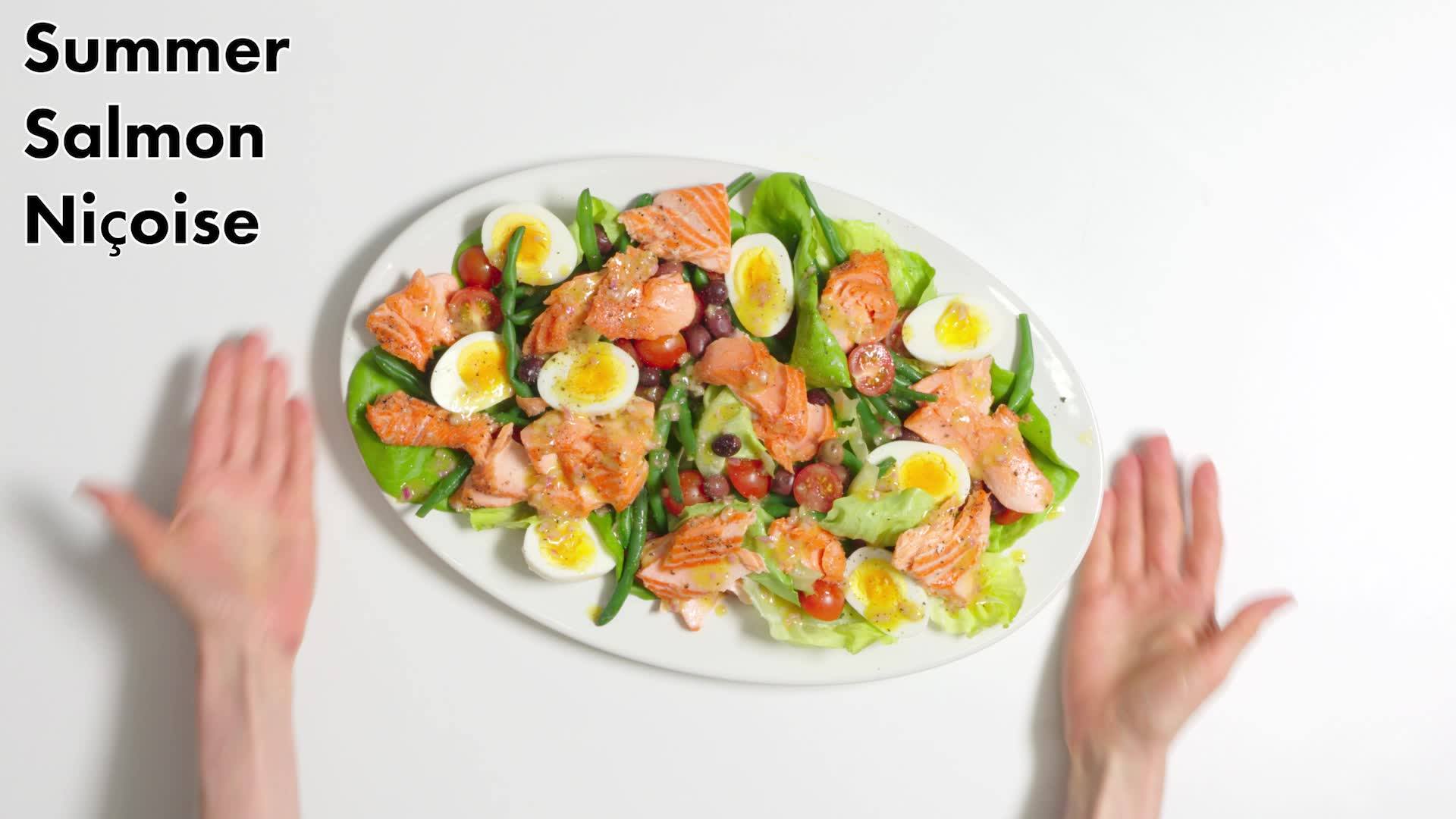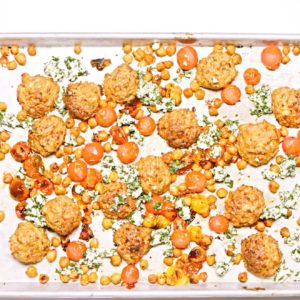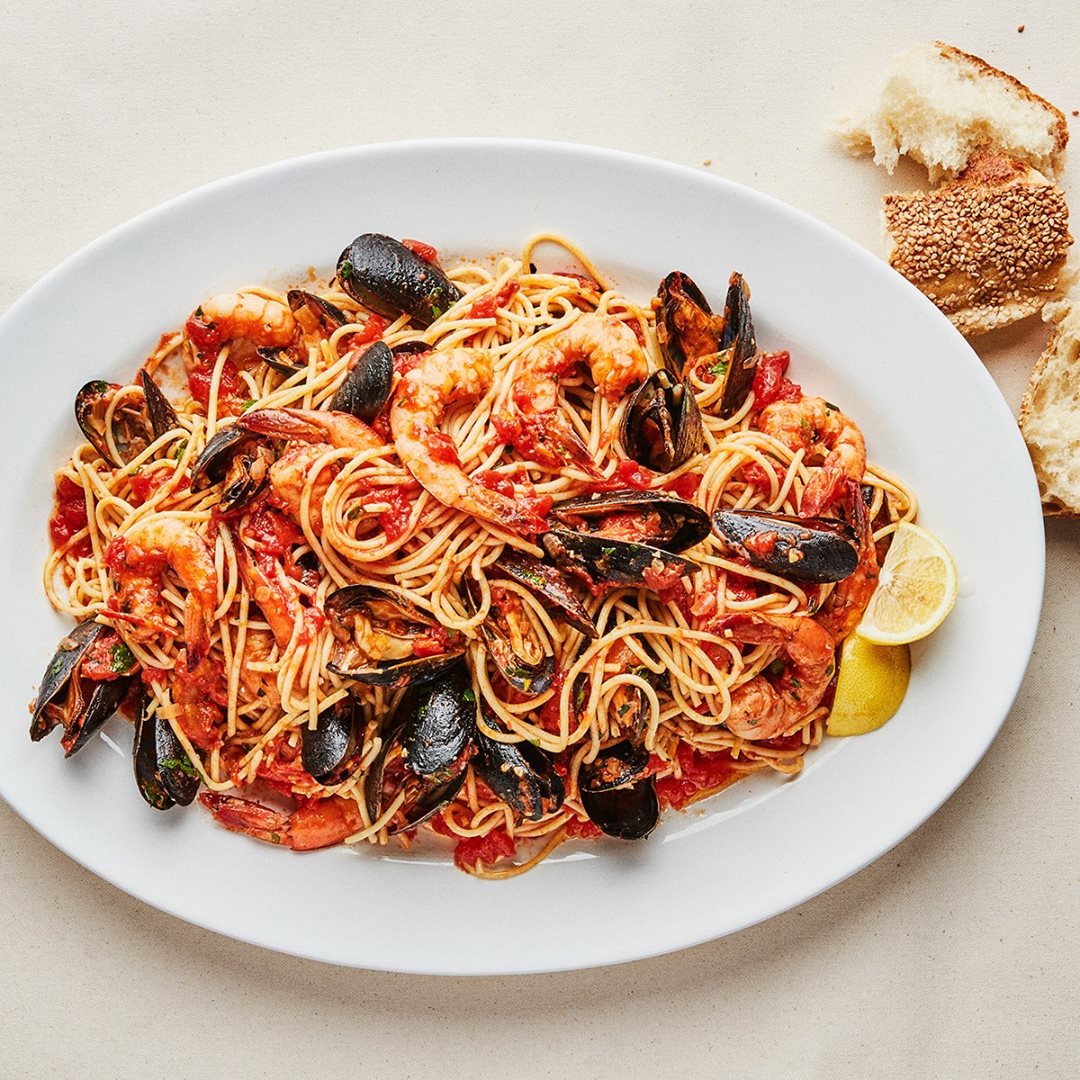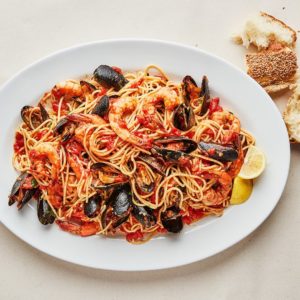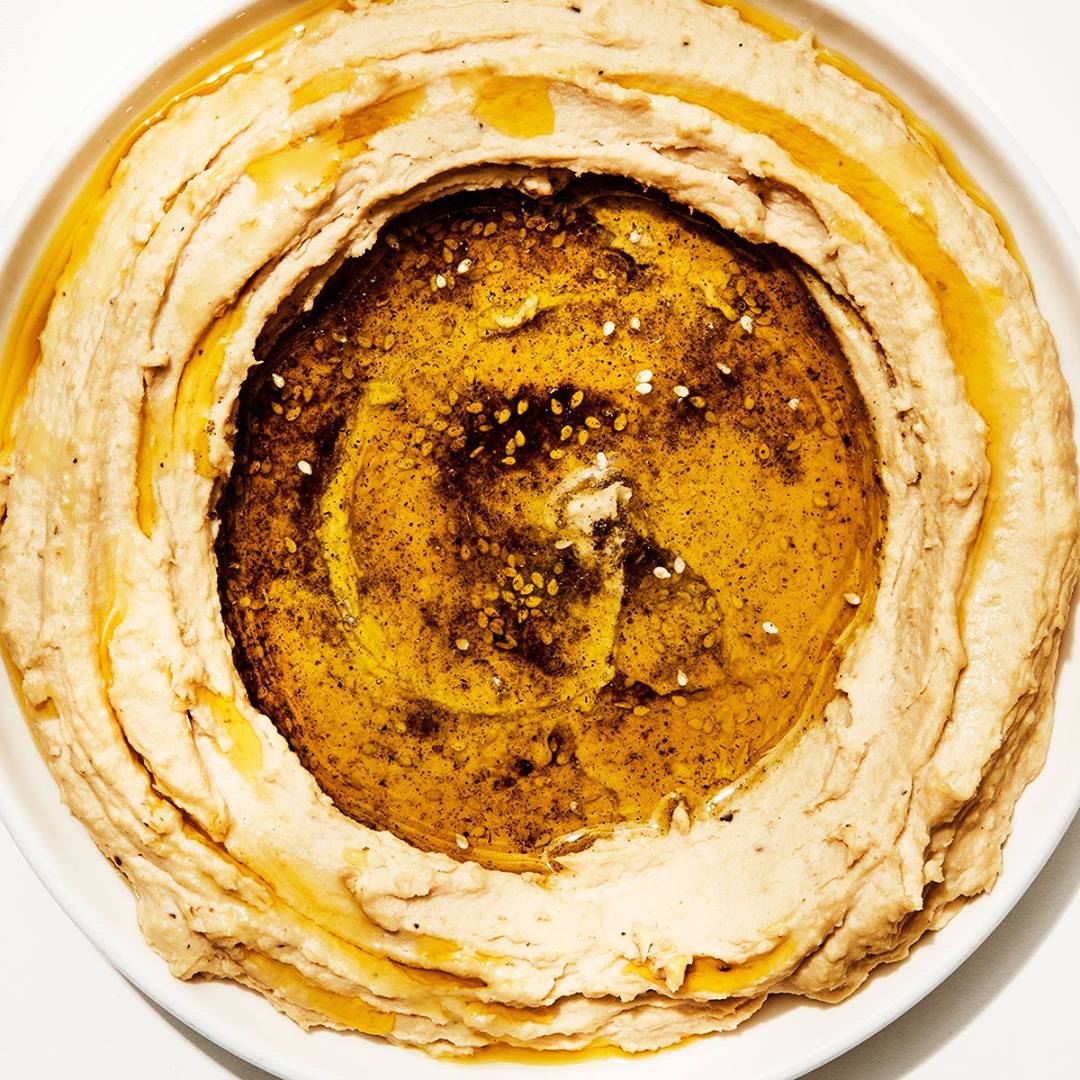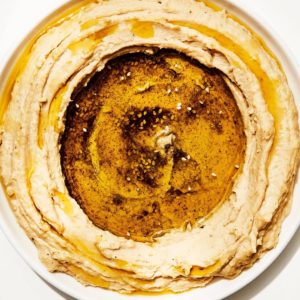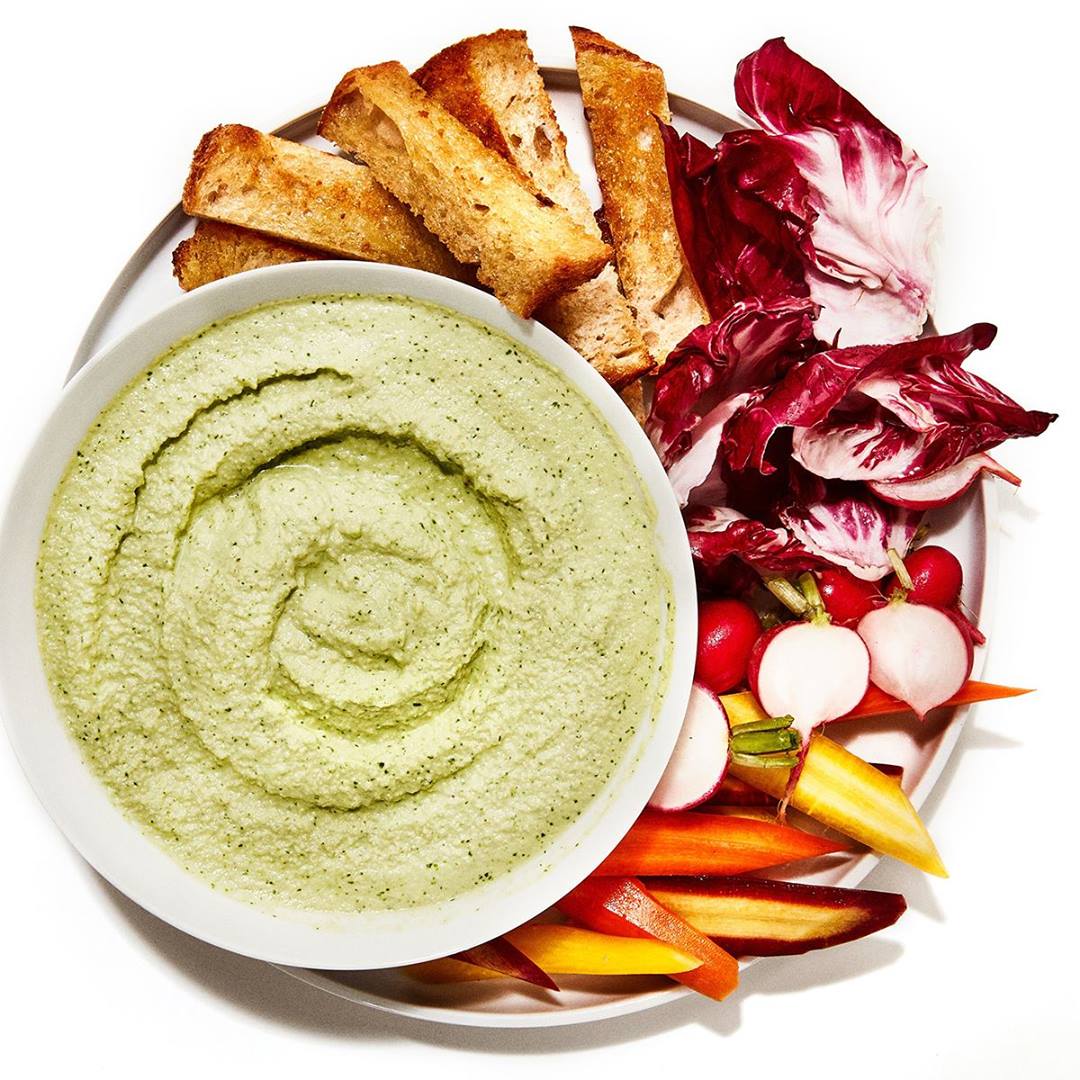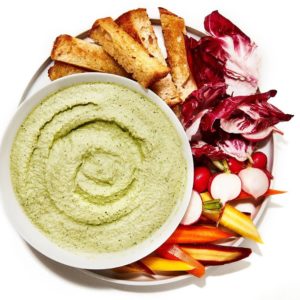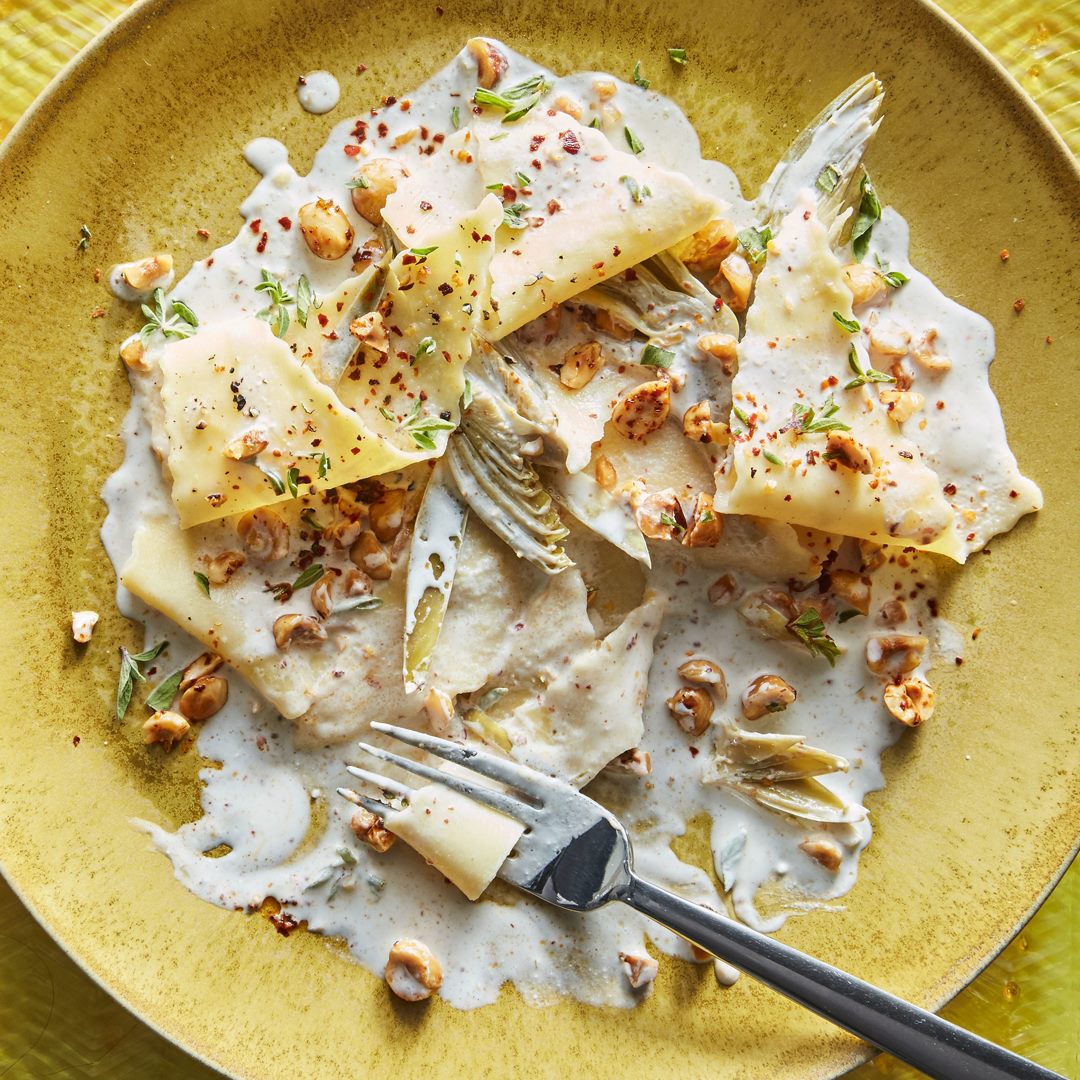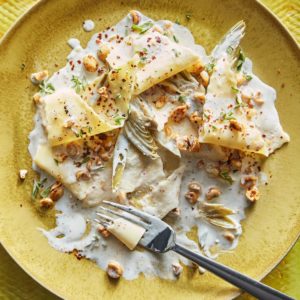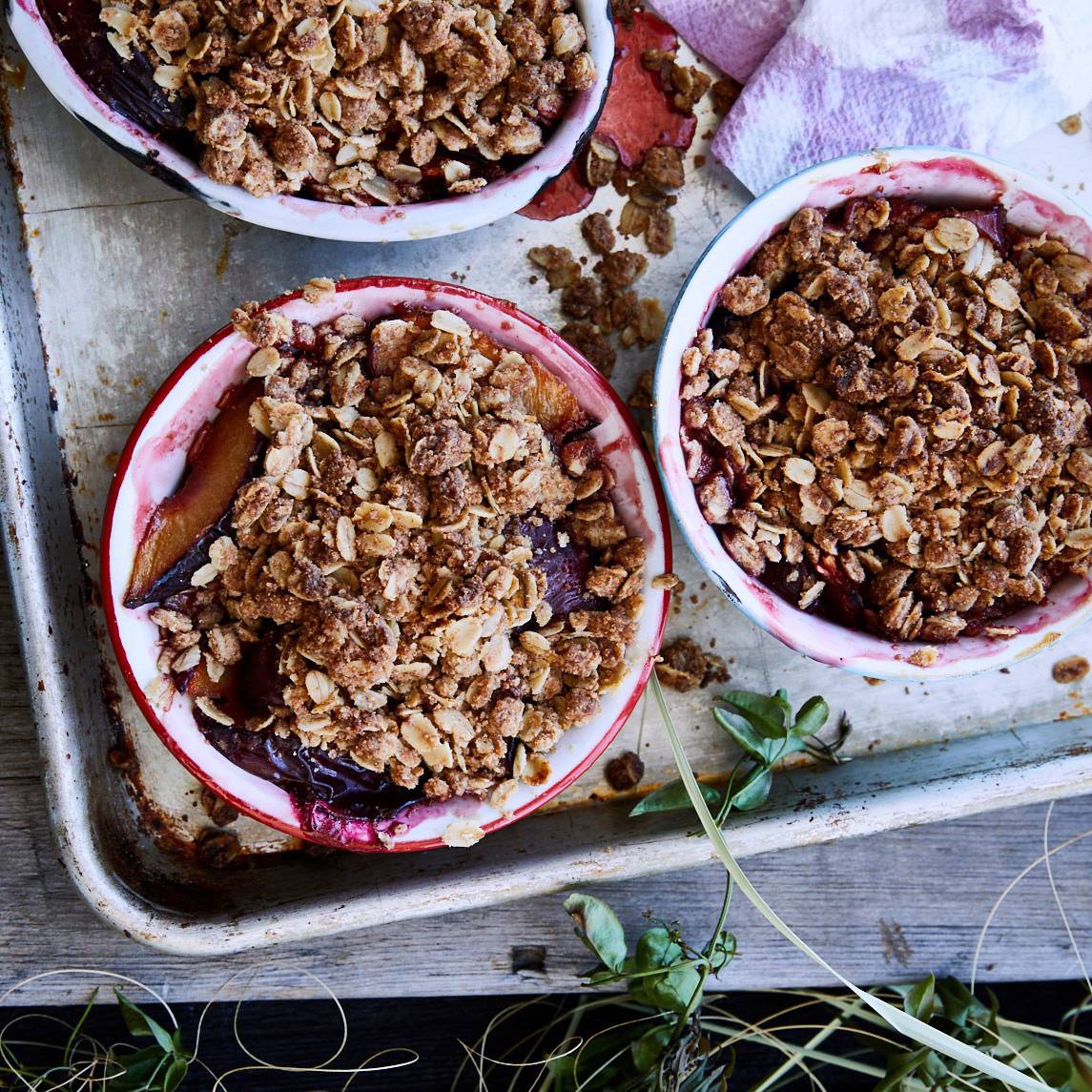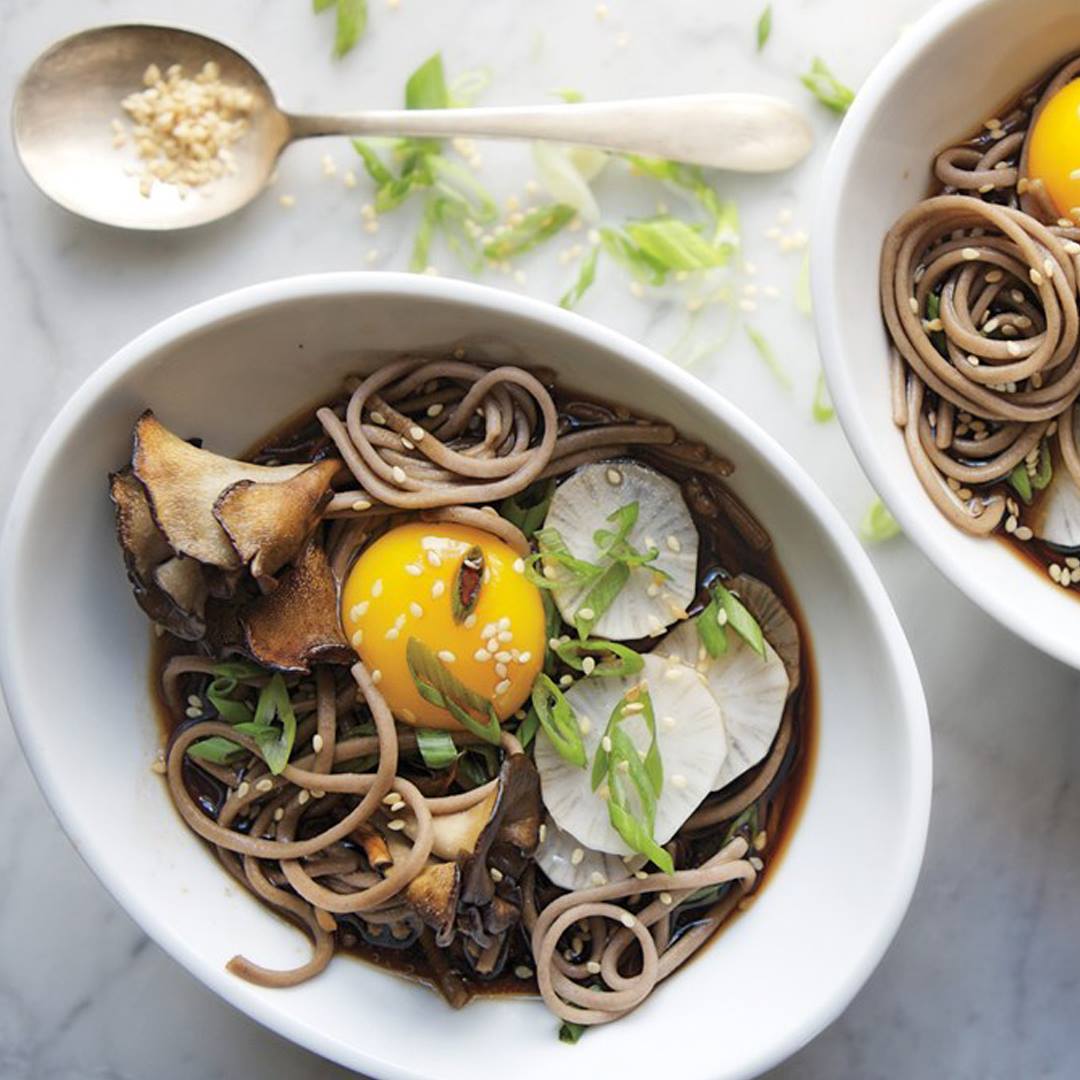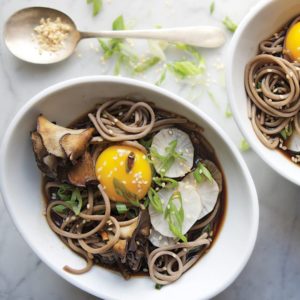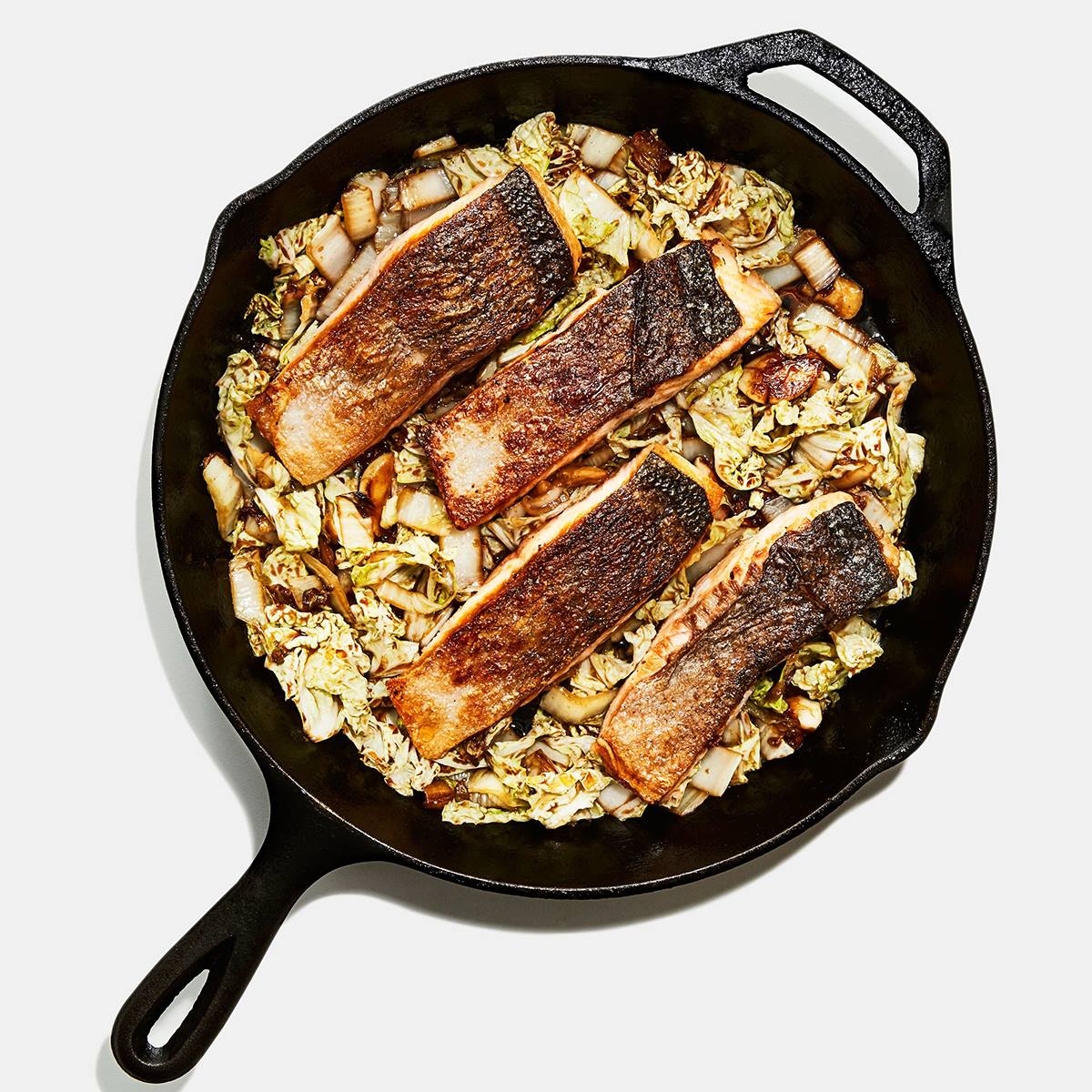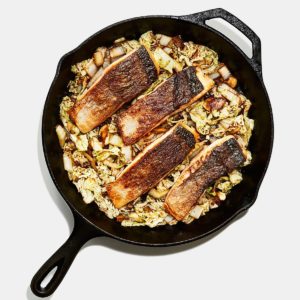Hanger Steak with Charred Scallion Sauce
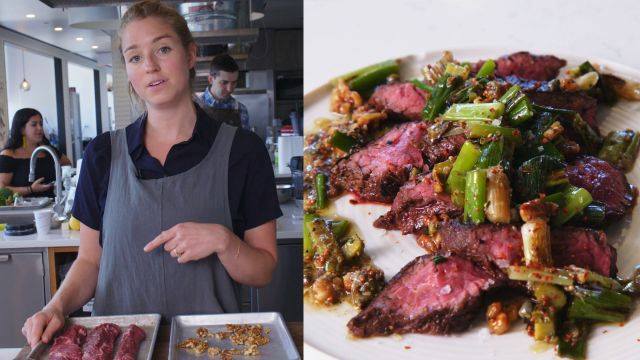
- ½ cup crushed or coarsely chopped walnuts
- 1 small garlic clove
- 9 Tbsp. extra-virgin olive oil, divided
- 1 1½-lb. hanger steak, cut into 4 pieces, center membrane removed
- Kosher salt, freshly ground pepper
- ¾ tsp. Aleppo-style pepper, plus more for serving
- 12 scallions
- 5 tsp. sherry vinegar or red wine vinegar
- 1 Tbsp. chopped cornichons
- 1 Tbsp. chopped drained capers
- 1 Tbsp. whole grain mustard
- ¾ tsp. chopped thyme
- Pinch of sugar
- Flaky sea salt
- Preheat oven to 350°. Toast walnuts on a rimmed baking sheet, tossing once, until golden brown, 8–10 minutes. Transfer to a medium bowl. Finely grate garlic over warm walnuts and toss with 6 Tbsp. oil.
- Heat a large cast-iron skillet over medium-high. Season steaks with kosher salt and black pepper; sprinkle all over with Aleppo-style pepper. Rub with 2 Tbsp. oil and cook, turning occasionally, until deeply browned and an instant-read thermometer inserted into the thickest part registers 130° for medium-rare, 10–12 minutes. Transfer steaks to a cutting board.
- Wipe out skillet and reduce heat to medium. Place scallions and 1 Tbsp. oil in skillet, season with kosher salt, and cook, turning occasionally, until softened and deeply charred, about 4 minutes. Transfer to cutting board; trim and cut into 1" pieces. Add to bowl with walnut mixture along with vinegar, cornichons, capers, mustard, thyme, and sugar and toss to combine; season with kosher salt and black pepper.
- Slice steak against the grain and sprinkle with sea salt. Serve with scallion sauce and more Aleppo-style pepper.
Watch the recipe video here:
If you've never charred scallions before, prepared to use this technique frequently. Make it: http://bonap.it/K8oHNd5
Posted by Bon Appétit Magazine on Saturday, May 4, 2019
